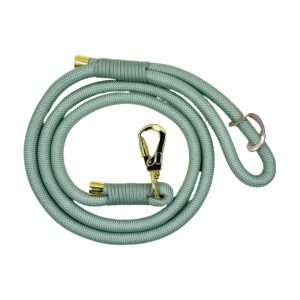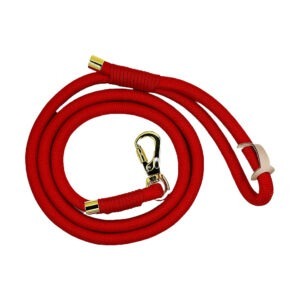In this article, we will delve into the fascinating world of Borzois and Greyhounds, two regal dog breeds known for their elegance and grace. We will explore their historical backgrounds, physical characteristics, personalities, adaptability, training needs, dietary requirements, exercise preferences, grooming needs, health issues, life spans, and age-related concerns. By the end, you will have a well-rounded understanding of these breeds, enabling you to make an informed decision if you are considering adding one to your family.
Historical Background
The Borzoi Breed
The Borzoi, also known as the Russian Wolfhound, has a rich history that dates back centuries. Originally bred by Russian aristocracy for hunting wolves, Borzois were prized for their exceptional speed and agility. They were selectively bred to maintain their hunting prowess while also displaying a gentle and loyal temperament, making them ideal companions for the Russian elite.
Some of our latest products...
The Greyhound Breed
The Greyhound, often hailed as the fastest dog breed in the world, boasts a long lineage tracing back to ancient Egypt. Revered for their incredible speed, Greyhounds were initially bred for hunting game, including hare and deer. Over time, they transitioned from being exclusively hunting dogs to becoming beloved companions renowned for their elegant appearance and gentle nature.
In terms of historical roles, while both breeds have hunting origins, the Borzoi specialized in hunting wolves, while the Greyhound focused on smaller game.
Physical Characteristics
When comparing the physical characteristics of Borzois and Greyhounds, several distinctions become evident.
Borzois are large dogs, standing at approximately 26 to 32 inches at the shoulder and weighing between 60 and 105 pounds. They possess a long, narrow head with expressive eyes and a slightly arched neck. Borzois flaunt a silky, flowing coat that comes in a variety of colors, including white, golden, tan, and gray.
Greyhounds, on the other hand, are slightly smaller, measuring between 27 and 30 inches at the shoulder and weighing 60 to 70 pounds. They feature a slim, athletic build with a deep chest and a slender head. Greyhounds possess a short, smooth coat that can be seen in various colors and patterns, such as fawn, brindle, black, and white.
Personality and Temperament
When it comes to personality and temperament, Borzois and Greyhounds have some similarities but also exhibit unique traits.
Borzois are known for their gentle and reserved nature. They are typically calm and well-mannered, making them excellent companions for relaxed households. Borzois tend to be affectionate with their families and are generally polite with strangers. However, their independent streak may make training a bit more challenging.
Greyhounds are often described as sweet and affectionate dogs. They have a quiet and laid-back demeanor, but they can also possess bursts of energy during playtime. Greyhounds tend to be friendly toward both familiar faces and strangers, making them suitable for households with regular visitors.
Interaction with Children and Other Pets
Both Borzois and Greyhounds can coexist harmoniously with children and other pets, but there are a few factors to consider.
Borzois are generally well-mannered with children, particularly if they have been properly socialized from an early age. However, due to their large size, supervision is essential to ensure the safety of both the dog and the child. Borzois also have a high prey drive, so caution should be exercised when introducing them to smaller pets.
Greyhounds are known for their gentle and patient nature with children. They can form strong bonds and be quite tolerant of kids’ playful antics. Like Borzois, Greyhounds have a strong prey drive, so careful introductions and monitoring are necessary when introducing them to smaller pets.
Adaptability
When it comes to adaptability, Borzois and Greyhounds have their own unique considerations.
Borzois are generally adaptable to various environments but thrive in homes with spacious yards where they can stretch their legs. They can adapt to apartment living as long as they receive sufficient exercise and mental stimulation. Borzois are more inclined to relax indoors, making them suitable for families who enjoy a calm atmosphere.
Greyhounds are remarkably adaptable and can adjust well to apartment living. While they appreciate regular exercise, they are known for their exceptional couch-potato skills and are content with a few short bursts of intense activity each day. However, Greyhounds can be sensitive to extreme temperatures, so proper shelter and climate control are important considerations.
Training Needs
When it comes to training, Borzois and Greyhounds have distinct characteristics that influence their responsiveness and learning abilities.
Borzois are intelligent dogs but can be independent thinkers. They may require patient and consistent training methods that focus on positive reinforcement. Early socialization and obedience training are essential to help them become well-rounded adult dogs.
Greyhounds are generally eager to please and quick to learn, making them more responsive to training. Positive reinforcement techniques work well with them, but they can also be sensitive to harsh correction or raised voices. Consistency and patience are key when training a Greyhound.
Dietary Needs
Proper nutrition is crucial for the health and well-being of Borzois and Greyhounds. While their dietary needs are similar, there are a few differences to consider.
Both breeds benefit from high-quality dog food formulated for large breeds, providing a balanced mix of protein, carbohydrates, fats, vitamins, and minerals. However, Borzois may require slightly higher levels of protein due to their larger size and more muscular build.
Exercise Needs
Both Borzois and Greyhounds are active breeds that require regular exercise to maintain their physical and mental well-being.
Borzois enjoy a good sprint or a long walk but are generally content with moderate exercise levels. They appreciate the opportunity to explore securely fenced areas where they can stretch their legs. Mental stimulation through interactive play and training sessions is also important for keeping Borzois engaged.
Greyhounds have bursts of intense energy followed by long periods of rest. They thrive on short, high-intensity bursts of exercise, such as a vigorous game of fetch or a sprint in an enclosed area. However, it’s important to provide them with daily opportunities to stretch their legs and release their energy.
Grooming Needs
Borzois and Greyhounds have different grooming requirements due to their distinct coat types.
Borzois have long, silky coats that require regular brushing to prevent matting and keep them looking their best. They shed moderately, so frequent brushing helps minimize loose hair in the home. Bathing should be done as needed to keep their coat clean and healthy.
Greyhounds have short, sleek coats that are relatively low-maintenance. They are minimal shedders, making them an excellent choice for individuals with allergies. Occasional brushing and bathing when necessary are usually sufficient to keep their coat in good condition.
Health Issues
When considering the health of Borzois and Greyhounds, it’s important to be aware of the potential breed-specific health concerns.
Borzois are generally a healthy breed, but they are prone to certain conditions such as bloat, hip dysplasia, heart issues, and progressive retinal atrophy. Regular veterinary check-ups, a balanced diet, and a healthy lifestyle can help mitigate the risk of these health issues.
Greyhounds are generally considered a healthy breed, but they are susceptible to conditions like bloat, osteosarcoma, hypothyroidism, and dental disease. Routine veterinary care, a nutritious diet, and proper dental hygiene are crucial for their overall well-being.
Life Span and Age-Related Issues
When comparing life spans, both Borzois and Greyhounds have relatively similar average life expectancies.
Borzois typically live between 10 and 14 years, although some may live longer with proper care. As they age, Borzois may be prone to age-related conditions like arthritis and vision/hearing loss.
Greyhounds also have an average lifespan of 10 to 14 years, with some individuals reaching their late teens. Like Borzois, they may experience age-related issues such as joint problems and sensory decline.
Conclusion
In conclusion, both Borzois and Greyhounds are majestic breeds with their own unique characteristics. Borzois exude elegance and grace, making them well-suited for calm and spacious households. Greyhounds, on the other hand, charm with their gentle nature and adaptability to various living situations.
When considering adding a Borzoi or Greyhound to your family, it’s essential to assess your lifestyle, space availability, and ability to meet their specific needs. Proper socialization, training, and healthcare play vital roles in nurturing these breeds into well-rounded and happy companions.
Whether you choose a Borzoi or a Greyhound, both breeds have the potential to bring immense joy and companionship to your life.
FAQs (Frequently Asked Questions)
Are Borzois and Greyhounds good with children?
Borzois and Greyhounds can be good with children when properly socialized and supervised. However, due to their size and prey drive, caution should be exercised.
Do Borzois and Greyhounds get along with other pets?
Both breeds can coexist with other pets, but introductions and monitoring are necessary, especially due to their prey drive.
Are Borzois and Greyhounds suitable for apartment living?
Borzois and Greyhounds can adapt to apartment living, but Borzois may benefit from access to a secure yard for exercise.
Which breed is easier to train, Borzois or Greyhounds?
Greyhounds tend to be more responsive to training, but both breeds require consistent and positive reinforcement-based training methods.
What are the common health issues in Borzois and Greyhounds?
Borzois and Greyhounds may be prone to certain conditions such as bloat, hip dysplasia, and heart issues, among others. Regular veterinary care is important.





